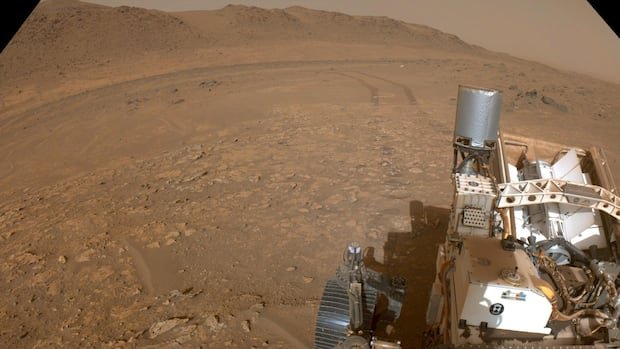Excitement stirs among scientists regarding the most recent geological findings hinting at potential life existence on Mars. However, history has shown that the Red Planet often conceals its mysteries, leaving room for non-life explanations for the observed formations.
During a recent discussion on Quirks & Quarks, geologist Joel Hurowitz highlighted the discovery of a significant rock by the Perseverance rover, exploring a former river delta leading to an ancient Martian lake.
In this delta, two chemicals – vivianite and greigite – were detected, commonly associated with microbial soil activity on Earth, sparking enthusiasm. Nonetheless, these chemicals can also form through chemical reactions, leaving room for doubt. This indicates potential but inconclusive evidence of life on Mars.

Mars has long enticed speculation about potential life, dating back to astronomer Percival Lowell’s observations in 1894 of what he believed to be artificial straight lines on the planet, which he dubbed canals. Lowell’s theory hinted at a sophisticated Martian civilization with advanced engineering capabilities.

Despite inspiring science fiction tales like H.G. Wells’ War of the Worlds, Lowell’s claims were later debunked by Mars missions in the 1970s, unveiling a barren, crater-covered landscape more akin to the moon than a hospitable environment.
Subsequent explorations did unveil evidence of ancient riverbeds, indicating past water flow on Mars billions of years ago. While water often signifies life on Earth, the Martian life, if any, likely does not resemble cities and canal networks.
In 1976, Viking landers conducted experiments on Martian soil, yielding ambiguous results when heated with a nutrient solution, suggesting potential microbial presence. However, a follow-up experiment searching for organics yielded none, leading to assumptions of a chemical rather than biological reaction.
The excitement resurfaced in 1996 with the discovery of a Martian meteorite in Antarctica containing a suspected fossilized worm, hinting at Martian life. Yet, geochemists proposed alternative non-biological origins for the find.
Ongoing debates persist, especially after NASA’s Curiosity rover detected the largest organic molecules on Mars to date, potentially linked to familiar Earthly life components.



